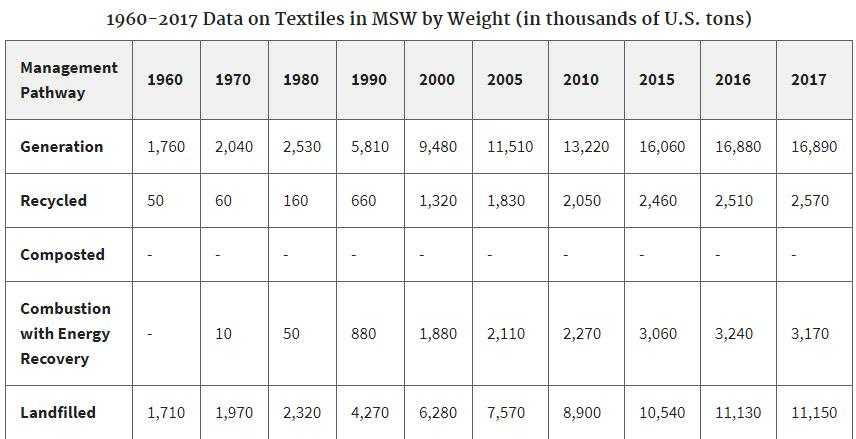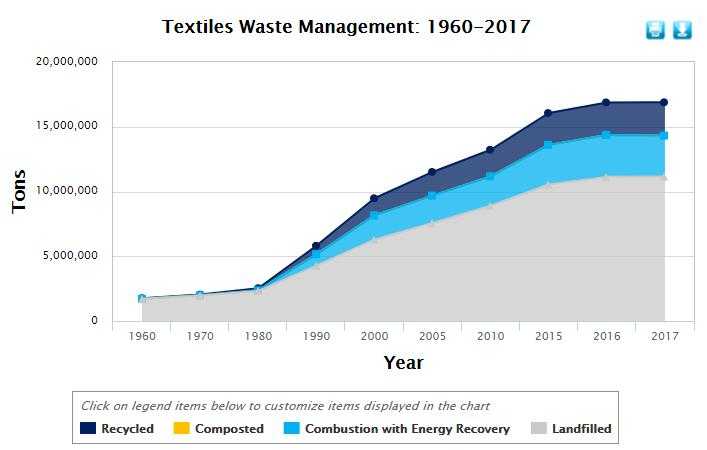Data Of Textile Material

A textile is a flexible material consisting of a network of natural or artificial fibers (yarn or thread). Yarn is produced by spinning raw fibres of wool, flax, cotton, hemp, or other materials to produce long strands. Textiles are formed by weaving, knitting, crocheting, knotting or tatting, felting, or braiding.
The related words "fabric" and "cloth" and "material" are often used in textile assembly trades (such as tailoring and dressmaking) as synonyms for textile. However, there are subtle differences in these terms in specialized usage. A textile is any material made of interlacing fibres, including carpeting and geotextiles. A fabric is a material made through weaving, knitting, spreading, crocheting, or bonding that may be used in production of further goods (garments, etc.). Cloth may be used synonymously with fabric but is often a piece of fabric that has been processed.
EPA measures the generation, recycling, composting, combustion with energy recovery and landfilling of textile material in MSW.
EPA estimated that the generation of textiles in 2017 was 16.9 million tons. This figure represents 6.3 percent of total MSW generation that year. Generation estimates for clothing and footwear were based in part on sales data from the American Apparel and Footwear Association. EPA also found that significant amounts of textiles enter the reuse market, but the amount of reused textiles is not included in the generation estimate. Reused garments and wiper rags enter the waste stream eventually and become a part of MSW generation.
The recycling rate for all textiles was 15.2 percent in 2017, with 2.6 million tons recycled. Within this figure, EPA estimated that the recycling rate for textiles in clothing and footwear was 13.6 percent based on information from the American Textile Recycling Service. The rate for items such as sheets and pillowcases was 16.3 percent in 2017.
The total amount of textiles in MSW combusted in 2017 was 3.2 million tons. This was 9.3 percent of MSW combusted with energy recovery.
Summary Table and Graph:
The data below are from 1960 to 2017, relating to the total number of tons of textiles generated, recycled, composted, combusted with energy recovery and landfilled.
1960-2017 Data on Textiles in MSW by Weight (in thousands of U.S. tons)


2019-11-15 18:11


